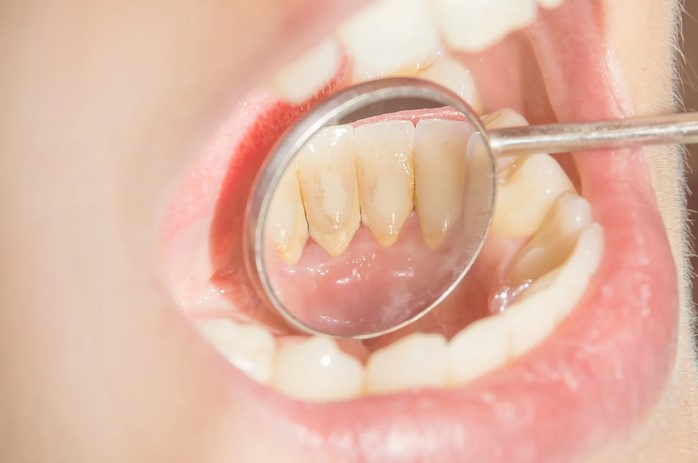
Plaque buildup on teeth is a common dental issue that occurs when bacteria, food particles, and saliva combine on the surface of the teeth. This sticky film can lead to various oral health problems, including cavities and gum disease, if not properly managed. The causes of plaque buildup range from poor oral hygiene to lifestyle habits such as smoking and excessive consumption of sugary foods. Prevention methods include regular brushing, flossing, and professional dental cleanings. Removal of plaque is typically achieved through professional dental cleanings, but maintaining a consistent oral hygiene routine can also help control plaque levels. This article will delve into the causes, prevention, and removal of plaque buildup on teeth.
Understanding Plaque Buildup on Teeth: Causes, Prevention, and Effective Removal Techniques
Plaque buildup on teeth is a common dental issue that affects individuals of all ages. It is a sticky, colorless film of bacteria that constantly forms on our teeth and along the gum line. Understanding the causes, prevention, and effective removal techniques of plaque is essential to maintaining good oral health.
The primary cause of plaque buildup is the interaction between the sugars in the food we eat and the bacteria that reside in our mouth. When we consume foods and drinks high in carbohydrates, particularly sugary foods and beverages, the bacteria in our mouth break down these sugars, producing acids in the process. These acids combine with our saliva and the bacteria in our mouth to form plaque. If not removed promptly, plaque can harden into tartar, a more stubborn substance that requires professional dental cleaning for removal.
Preventing plaque buildup is largely a matter of maintaining good oral hygiene. Brushing your teeth at least twice a day, flossing daily, and using an antimicrobial mouthwash can help keep plaque at bay. It’s also important to eat a balanced diet and limit the intake of sugary foods and drinks. Regular dental check-ups are crucial as well, as they allow your dentist to detect any signs of plaque buildup early and provide professional cleaning to remove any tartar that may have formed.
Despite our best efforts, plaque can still accumulate on our teeth. This is where effective removal techniques come into play. Brushing with a soft-bristled toothbrush and fluoride toothpaste is a good start. The toothbrush should be held at a 45-degree angle to the gums, and small, gentle strokes should be used to clean all surfaces of the teeth. Flossing is equally important, as it removes plaque from between the teeth and along the gum line where the toothbrush can’t reach.
For more stubborn plaque or tartar, professional dental cleaning is necessary. During a dental cleaning, a dentist or dental hygienist will use special tools to scrape off tartar from your teeth both above and below the gum line. This process, known as scaling, can be uncomfortable, but it’s essential for preventing gum disease. If plaque and tartar are left untreated, they can lead to more serious dental problems, including cavities, gingivitis, and periodontitis.
In addition to regular brushing and flossing, there are other products available that can help control plaque. These include antimicrobial mouth rinses and toothpastes that contain ingredients designed to kill bacteria. There are also dental tools like water flossers and interdental brushes that can help remove plaque in hard-to-reach areas.
In conclusion, plaque buildup on teeth is a common but preventable dental issue. By understanding its causes and practicing good oral hygiene, we can effectively prevent plaque from forming. And when plaque does form, knowing how to remove it effectively can help us maintain our oral health and prevent more serious dental problems. Regular dental check-ups and professional cleanings are also key to keeping our teeth and gums healthy.Plaque buildup on teeth is primarily caused by poor oral hygiene, which allows bacteria to accumulate and harden on the tooth surface. Consuming sugary and starchy foods can also contribute to this problem. Prevention methods include regular brushing, flossing, and dental check-ups. Removal of plaque can be achieved through professional dental cleanings and the use of certain dental products. Therefore, maintaining good oral hygiene and regular dental visits are crucial to prevent and manage plaque buildup on teeth.